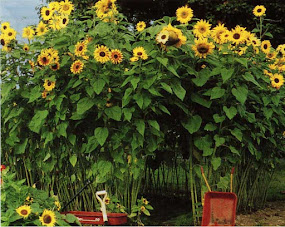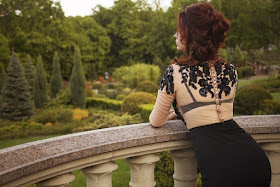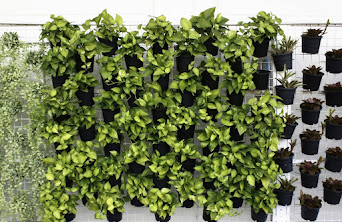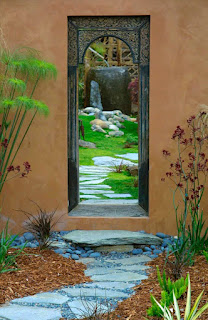Who doesn’t like sunflowers? Sunflowers belong to the small group of plants that everyone seems to like and can identify, but they are much more than a pretty face. The sunflower plant has given people joy for tens of thousands of years, by virtue of its beauty but also for all the cool things it gives us. At this point in spring, it's time to plant sunflowers, so let’s dig into them a bit before planting them.

Sunflowers (
Helianthus spp) were once just a pretty wildflower native to North America. But as early as 5,000 years ago, Indigenous people in modern-day New Mexico and Arizona were cultivating them. These ancient people didn’t just domesticate the sunflower plant, they selectively cultivated it to produce certain colors and specific amounts of flowers and seeds. Across the tribes, sunflowers had a great many uses beyond their value as a food source. Sunflower oil was used in cooking and to soothe skin and smooth hair, the flowers made great dyes for textiles and body applications, and their stalks could be used as building materials. Sunflowers were also used for ceremonial purposes and had extensive medicinal applications - they were used to treat snake bites, chest problems, wound treatments and much, much more. Read more about all this
here.
The Spaniards, and other colonists, took the sunflower to Europe beginning in the early 1500s. It was treated as an ornamental with tasty seeds until the 1700s when the Russian Tsar, Peter the Great,
recognized its value as a food and oil crop and initiated it’s commercial cultivation. Russia is still a leading producer of sunflowers, but
the top producer is Ukraine. In 2021 it provided a 47% share of global sunflower oil exports. Since the Russian’s war on Ukraine, production of this vital crop has been disrupted, which has led to shortages. The sunflower is the national flower of Ukraine and it’s bright yellow is part of their flag. In the early days after the Russian invasion, a video got out of a Ukrainian woman giving sunflower seeds to Russian soldiers. As she handed them out she was telling the soldiers to put the seeds in their pockets so that when they die the flowers would grow on Ukrainian soil (watch it
here). Since that remarkable act, sunflowers have become a symbol of peace, solidarity with Ukraine, and resistance.

The original wildflower would have looked very different from the sunflower we know today. Over the centuries since the Indigenous botanists first made changes to the plant, many growers have done the same. There are about 70 species in the Helianthus genus today and they range from little-bitty ones of about 1-2 feet to majestic, towering ones (the
tallest was 30'1"). There are numerous versions of the familiar cheery yellow flower, but there are also terra-cotta, orange, white, purple and pink varieties.
Here are some of them.
 With all the choices at hand, picking just one variety could be a bit difficult, but once you do it is essential that you pick the spot to plant your sunflowers carefully. These are sunflowers after all, so you’ll want to make sure that they have sun all day (at least 6-8 hours). As they grow you will be able to watch them exhibit a behavior known as heliotropism. This is when the buds and small blossoms face east in the morning and move with the sun throughout the day to maximize their light intake. As the plants mature, when the stems thicken and the heads become heavy with seeds, this behavior ends.
With all the choices at hand, picking just one variety could be a bit difficult, but once you do it is essential that you pick the spot to plant your sunflowers carefully. These are sunflowers after all, so you’ll want to make sure that they have sun all day (at least 6-8 hours). As they grow you will be able to watch them exhibit a behavior known as heliotropism. This is when the buds and small blossoms face east in the morning and move with the sun throughout the day to maximize their light intake. As the plants mature, when the stems thicken and the heads become heavy with seeds, this behavior ends.
Another reason to pick your planting spot carefully is that sunflowers are allelopathic. Plants that are allelopathic emit chemicals that can inhibit the growth of (or kill out-right) other plants. For sunflowers, this means that they will eliminate resource-competitors to give their seeds the best chance to germinate and grow. This doesn’t mean that sunflowers have to be grown alone, it just means that you should do a little research before you decide what to plant around them as some plants are more at-risk than others. Here are some helpful guidelines.
If you have children, you may want to consider growing a sunflower house in your garden. This is simply a bower in the garden created by closely planted sunflowers. You can either leave the sunflowers to grow as they want or train them to grow over to form a “roof” for the sunflower house.
Here are some super-simple instructions.
 In case you need another reason to plant sunflowers, consider the fact that sunflowers can remediate soil. They remove toxins and heavy metals and have even been used to absorb radiation around Fukushima and Chernobyl after the nuclear disasters there. Your yard may not have been the site of a disaster, but all soil could use a little freshening up and after growing sunflowers you'll have better soil for the next growing cycle. Here’s the story of a young scholar who is working out ways to best utilize this awesome sunflower trait.
In case you need another reason to plant sunflowers, consider the fact that sunflowers can remediate soil. They remove toxins and heavy metals and have even been used to absorb radiation around Fukushima and Chernobyl after the nuclear disasters there. Your yard may not have been the site of a disaster, but all soil could use a little freshening up and after growing sunflowers you'll have better soil for the next growing cycle. Here’s the story of a young scholar who is working out ways to best utilize this awesome sunflower trait.
Sunflower lovers have no shortage of sunflower-related stuff they can surround themselves with (check out this Amazon search), but the best way to love them is to plant them and watch them grow. Which will also let pollinators and other creatures show their love.
Take Care
Submitted by Pam

 With all the choices at hand, picking just one variety could be a bit difficult, but once you do it is essential that you pick the spot to plant your sunflowers carefully. These are sunflowers after all, so you’ll want to make sure that they have sun all day (at least 6-8 hours). As they grow you will be able to watch them exhibit a behavior known as heliotropism. This is when the buds and small blossoms face east in the morning and move with the sun throughout the day to maximize their light intake. As the plants mature, when the stems thicken and the heads become heavy with seeds, this behavior ends.
With all the choices at hand, picking just one variety could be a bit difficult, but once you do it is essential that you pick the spot to plant your sunflowers carefully. These are sunflowers after all, so you’ll want to make sure that they have sun all day (at least 6-8 hours). As they grow you will be able to watch them exhibit a behavior known as heliotropism. This is when the buds and small blossoms face east in the morning and move with the sun throughout the day to maximize their light intake. As the plants mature, when the stems thicken and the heads become heavy with seeds, this behavior ends.  In case you need another reason to plant sunflowers, consider the fact that sunflowers can remediate soil. They remove toxins and heavy metals and have even been used to absorb radiation around Fukushima and Chernobyl after the nuclear disasters there. Your yard may not have been the site of a disaster, but all soil could use a little freshening up and after growing sunflowers you'll have better soil for the next growing cycle. Here’s the story of a young scholar who is working out ways to best utilize this awesome sunflower trait.
In case you need another reason to plant sunflowers, consider the fact that sunflowers can remediate soil. They remove toxins and heavy metals and have even been used to absorb radiation around Fukushima and Chernobyl after the nuclear disasters there. Your yard may not have been the site of a disaster, but all soil could use a little freshening up and after growing sunflowers you'll have better soil for the next growing cycle. Here’s the story of a young scholar who is working out ways to best utilize this awesome sunflower trait. 


















